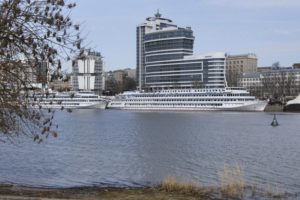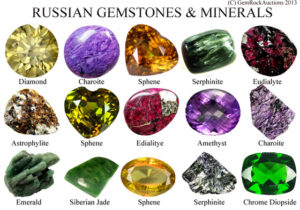Siberia has been a part of modern Russia since the 16th and 17th centuries. The territory ranges from Ural Mountains to watershed between the Pacific and Arctic drainage basins. Moreover, it stretches from the Arctic Ocean to the hills of north-central Kazakhstan and also to the national borders of Mongolia and China. With such range, Siberia occupies 77% of Russia’s land area with the area of 13.1 million square kilometers. Although Siberia occupies most of Russia’s land area, there are only 36 million people living in the area. The number takes only 27% of the Russia’s population.
In Siberia, there flows the largest river system that flows to Arctic sea, Yenisei River. The river divides Siberia into two Eastern and Western Siberia. Although the barrier of the two territories is just the river, there are huge differences between the two territories. At least, there are 5 differences of Eastern and Western Siberia. You can also read amazing facts about life in Siberia,
1. Area
Western Siberia is a lot smaller than Eastern Siberia. The Western ranges from Ural mountains to Yenisei River from west to east with the length of 1,500 km. From north to south, this area stretches from Arctic ocean to Kazakh steppe with the length of 2,500 km. The total area of this territory is about 2.45 millions km square. The territory includes such modern regions of Russia as the Republic of Altai, the Altai Krai, Kemerovo region, Novosibirsk region, Omsk region, Tomsk region, Tyumen region (including Khanty-Mansi Autonomous District and the Yamal-Nenets Autonomous District).
Meanwhile, Eastern Siberia occupies 7.28 millions km square. This also means that the area is slightly smaller Australia. With such area, Eastern Siberia becomes the mountainous territory that divides Western Siberia from the Russian Far East. The regions in this area include the Republic of Buryatia, Trans-Baikal territory, Irkutsk Region, Krasnoyarsk Territory, the Republic of Khakassia, Tuva and Yakutia.
2. Climate
 In addition to the huge difference in the area, climate in both territories also different. Climate in Western Siberia is moderately continental. This is due to the fact that the distance to Atlantic ocean and to the center of continental Eurasia, that affect the climate in Western Siberia, is almost similar. During winter and summer, the Arctic air enters the area. The penetration makes the temperature ranges from -15 to -30 degree Celsius, during winter. In the summer, the temperature ranges from +5 to +20 degree Celsius. Moreover, each area has big difference in temperature that can reach up to 45 degree.
In addition to the huge difference in the area, climate in both territories also different. Climate in Western Siberia is moderately continental. This is due to the fact that the distance to Atlantic ocean and to the center of continental Eurasia, that affect the climate in Western Siberia, is almost similar. During winter and summer, the Arctic air enters the area. The penetration makes the temperature ranges from -15 to -30 degree Celsius, during winter. In the summer, the temperature ranges from +5 to +20 degree Celsius. Moreover, each area has big difference in temperature that can reach up to 45 degree.
Meanwhile, the climate in Eastern Siberia is distinctly continental. People in Yakutsk can face up to -40 degree Celsius in the deep winter. Moreover, there is no overland transportation year around as the place is covered deep in ice. The difference temperature between coldest winter and hottest summer can range from 45 to 100 more degree Celsius. This makes the area become the coldest and the hottest area in the two seasons.
3. Hydrography
 In term of hydrography, Eastern Siberia has the biggest amount of water deposit that comes from Lake Baikal. This lake contains 22-23% of fresh surface water in the world. That number is so fantastic for a lake that it becomes the largest freshwater lake in the world by volume. Moreover, this lake is rich in oxygen, even in deep sections. The lake is located in Southern Siberia that also belongs to Eastern Siberia.
In term of hydrography, Eastern Siberia has the biggest amount of water deposit that comes from Lake Baikal. This lake contains 22-23% of fresh surface water in the world. That number is so fantastic for a lake that it becomes the largest freshwater lake in the world by volume. Moreover, this lake is rich in oxygen, even in deep sections. The lake is located in Southern Siberia that also belongs to Eastern Siberia.
Meanwhile, Western Siberia gets its source of water from rivers that belong to the basin of the Kara sea. The Ob river with the tributary of the Irtysh river is one of the greatest rivers in the world. The two rivers are included in 10 largest river in the world. The river is also the largest artery in Western Siberia. The river starts from Altai and flows into the Ob Bay of the Kara sea. Ob river takes its main tributaries in the forest zone. Moreover, there are a lot of swamps in Western Siberia. The swamps exist due to poor drainage and excessive watering. Middle and Northern part of Western Siberia are one of the most waterlogged spaces on earth.
4. Economy Potential
 There are a lot of mines in Eastern Siberia. In fact, the major industry in this area is mining. It has the largest diamond mine. In addition to mining diamonds, the people mine gold, silver, aluminum, tungsten, nickel, molybdenum, tin monoxide, antimony, lead, copper, zinc, mica, fluorspar, graphite and salt. Moreover, it has the longest oil pipeline and the the second longest railway tunnel in the world.
There are a lot of mines in Eastern Siberia. In fact, the major industry in this area is mining. It has the largest diamond mine. In addition to mining diamonds, the people mine gold, silver, aluminum, tungsten, nickel, molybdenum, tin monoxide, antimony, lead, copper, zinc, mica, fluorspar, graphite and salt. Moreover, it has the longest oil pipeline and the the second longest railway tunnel in the world.
Similar to its counter part, Western Siberia industries also include mining. However, the mining is quite different. Western Siberia people does not mine much mineral, they mine oil, gas, coal, instead. The area produces 70% of oil and natural gas and 30% of coal in Russia. In addition to mining, they also have forest industry. They produces 20% of Russian wood. The woods come from Taiga forests that are vast in Western Siberia. They occupies 62% of the territory and are part of “lungs of the planet.” You may want to read animals that live in Siberian tundra, facts of tundra in Russia, fascinating facts about taiga in Russia and plants in tundra Northern Russia.
Those are 5 differences of Eastern and Western Siberia that you need to know.
